CHRIS WEAVER, DIRECTOR OF CURRICULUM AND FACULTY DEVELOPMENT:
Here’s a question — if you gave an eighth grader a chance to design a class, something individually meaningful and big enough to stretch across a year, what would happen? How would it turn out?
We asked this question here at Peck, and it resonated immediately with a couple of things that we feel strongly about.
It’s a time in life that seems to call out for trying something big.
The first is that eighth graders can do more than most people expect. As a K-8 school, these are our oldest students, the ones we’ve watched grow up, and the ones we depend on now to be our school leaders. Probably we’re a little biased, but to us there is something special about eighth grade — a time that contains so many of the parts of being a kid and so many of the parts of being an adult, all swirled together. It’s a time in life that seems to call out for trying something big.
The second has to do with growth. We want our students to be self-starters and problem-solvers, we want them to have a sense of agency around their future, and a sense of grit in pursuing their passions. But to develop these skills, to grow into them, we also know that our students need meaningful opportunities to practice, to try and fail, and to find their own way forward.
So, here’s what we did.
We started with a block of time — forty-five minutes, once a week — a class that would run throughout the year. The students would design year-long projects, working individually or in groups. And, we’d call the whole thing Capstone Lab. The idea of Capstone, of course, is of something important and culminating — but we also wanted the experience to be real, not always polished or perfect. That’s where the word Lab comes in. For the class to work, it would have to be a place of genuine experimentation, of figuring out, of hitting road blocks and strategizing ways around. It would be a place to learn and grow.
The other piece that we established early on was the methodology to guide the project. We knew that Design Thinking — with its emphasis on iteration, prototyping, and creative problem solving — would form an important component in how we helped our students to define their projects. It would enable the students to think big and to be creative. And, we also knew that Design Thinking would provide a toolkit to troubleshoot and strategize the inevitable complexities and hiccups that would arise as their projects moved forward.
...looking around at the sea of faces, it was hard to know what to think.
When the first class arrived, we pushed the desks together into a large rectangle. Then, with all of us sitting around, I began to lay things out. Timelines. Assignments. I couldn’t predict what the projects might be, so I talked about buckets that the projects might fit into — something to better the community, a business to start, a deep dive in a subject, a personal passion. I told them it would be “Great… Amazing.” But, looking around at the sea of faces, it was hard to know what to think. One of the tenants of Design Thinking of course is a bias toward action. That you can’t fully think through a complex problem ahead of time. That you simply have to jump in, to try things out; then learn, then adjust. But, that doesn’t mean that doing something new is easy.
Over the next weeks, the students brainstormed ideas, prototyped projects, sketched plans, abandoned the plans, formed groups, abandoned the groups. It was hard to find the way forward, and I began to meet with the students individually to talk things through. “So what are you thinking?” I would ask. “And, what are you interested in?” “How does that work?” “What do you do next?”
We didn’t find answers quickly, but gradually the questions themselves began to change and grow more specific. We were asking things that we had never asked before. Questions like: “How do we get access to a commercial kitchen?” “What is the FAA’s policy on drones?” “When does planting season start?” “Do we know any architects?” And in this way, we landed in new territory — that always exciting place where the things that you have been imagining start to become real.
So, back to the original question: What will an eighth grader do when given the chance?
One day I arrive to class and the large rectangle of seats is joined by three small desks at the back. It’s pitch day. In come the heads — the head of the of the upper school, the head of the whole school. They sit at these desks, opening their folders. Meanwhile, the students futz with their laptops, nervous and excited to share their ideas. Finally, the projector bulb brightens. Last minute instructions. The class quiets.
I already know, of course, the presentation topics that we’ll hear. I’ve drawn up the agenda for the class and have labeled each student presentation with some blunt title — things like Novel or Beach House. But how to explain it then, the difference between something typed across a piece of paper, and the brave act of standing in front a room of twenty people, students and teachers and administrators — and sharing not just an idea, but your very own idea, one that you have developed, and that is important to you?
I join the heads, sitting at the small desks, and before I can finish reading out the first name on my list, a student appears at the front. “I want to design and build a go kart,” she says. “An electric go kart.” She is all of thirteen years old, but she has already scavenged a frame from the junkyard, lined up support from the wood shop teacher, researched braking systems and ways to engineer the throttle. Should we clap? We do.
Another student follows, in quick succession. “I want to begin a fantasy novel.” He has character sketches and an outline. Even drawings and maps.
Then another student: “I want to save the monarch butterflies.”
And so it goes, one after another. For the full class and two more classes over the next week, the students present — each idea as unique as a fingerprint. Many of the ideas are audacious and unexpected, even inspiring. There are academic pursuits. “I want to learn greek.” “I want to create a blog about modern physics.” There are activists who have already reached out to organizations — finding ways to help the homeless or to join the fight against pediatric cancer. There are artists. “I want to create a sculpture.” “I want to create a photo installation.” And there are inventors. “I want to create a homework app.” “I want to design a better lacrosse stick.”
These, and so many more.
So, what will an eighth grader do?
The possibilities, it seems, are endless.





